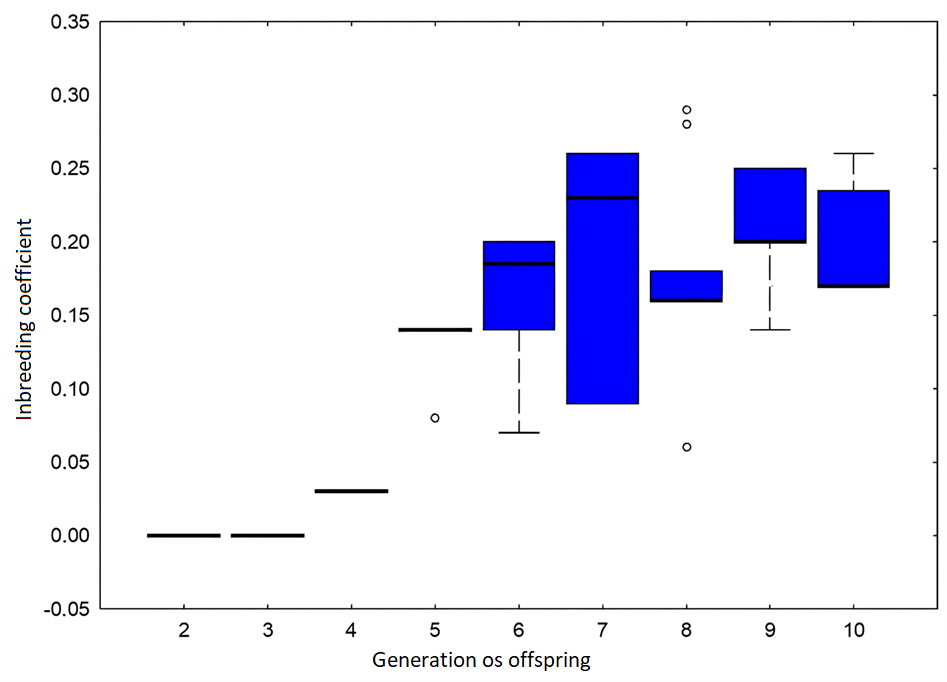
Inbreeding is inevitable among animals in captivity. Its negative consequence is inbreeding depression, which manifests itself at the genetic and phenotypic levels. It is expressed in an increase in offspring mortality, a decrease in their fertility, growth and development rates, and a deterioration in immunity. In theoretical and practical terms, it is important to study the effect of inbreeding on the viability and reproductive performance of animals, particularly rodents. It is necessary to obtain accurate information on the gradual increase in the degree of inbreeding in artificial colonies of mammals and the accompanying changes in the above parameters, as well as to determine the level of inbreeding upon reaching which signs of inbreeding depression begin to appear.
The yellow steppe lemming (Eolagurus luteus) is a rodent of the Arvicolinae subfamily of the Cricetidae family, inhabiting the deserts and semi-deserts of Eastern Kazakhstan, Mongolia, and Northwestern China. The modern range of the lemming is highly fragmented. Its sharp reduction occurred in the Late Pleistocene-Early Holocene due to climate change. Even before the mid-19th century, the species was common in the territory of modern Kazakhstan, but later became extinct in most of the territory, surviving only in the eastern part of the Zaysan Basin. Currently, the species is listed in the Red Book of the Republic of Kazakhstan. We assumed that the decline in numbers led to inbreeding, and therefore the lemmings surviving in the Zaysan Basin are inbred. Our small team decided that the special importance of studying the reproduction of yellow steppe lemmings in captivity is due to the fact that this is a rare species whose range has been steadily shrinking since the Pleistocene. And in order to understand how inbreeding can affect the future fate of this species, in artificial conditions it is necessary to estimate how the life expectancy of individuals will change, how many pairs of lemmings will reproduce and how many will not, whether the number of born and surviving young in a colony originating from only a few individuals will decrease with long-term inbreeding.

The colony of yellow lemmings we studied was kept at the Moscow Zoo from 2017 to 2021 and originated from 10 individuals (5 females and 5 males), which in turn were the first-generation offspring obtained from 7 unrelated animals (3 females and 4 males) captured in the Zaysan Basin. Of the 10 founders of the colony, 5 animals (4 females and 1 male) were descended from the same mother. That is, the degree of inbreeding of individuals in each subsequent generation increased. We conducted a precise assessment of the effect of inbreeding on the lifespan and reproductive performance of lemmings by calculating the inbreeding coefficients of individuals. The animals belonged to the second to tenth breeding generations. The inbreeding coefficient (the probability of the presence of two homologous alleles of a gene that are identical in origin) was calculated for 177 individuals and varied from 0 to 0.29. The maximum values (0.25-0.29) were recorded for individuals of the seventh to tenth generation. We also measured the lifespan (in days) of 61 animals and used information on reproduction or its absence in 45 pairs. For each pair that produced offspring, the total number of litters, offspring born and surviving to 30 days (the age of sexual maturity) was calculated. We found that the lifespan of the lemmings in the colony significantly decreased against the background of a progressive increase in their inbreeding coefficients. Statistical analysis also confirmed the negative impact of inbreeding on the main reproductive parameters, which depend primarily on the degree of inbreeding of females. In particular, the inbreeding coefficients of females that produced 10 or more (up to 23) broods varied from 0 to 0.14, and those of females that did not have offspring varied from 0.14 to 0.29. The negative impact of this factor increases if, in parallel with females, the degree of inbreeding of breeding males increases. In the colony, signs of inbreeding depression began to appear with an increase in the inbreeding coefficients of offspring to approximately 0.2 (starting from the sixth generation).

The study revealed the relative resistance of yellow lemmings to inbreeding depression in conditions where the artificial population is formed from only 7 animals. The yellow lemming in the Zaisan Basin is characterized by sharp fluctuations in numbers from mass reproduction to almost complete extinction due to unfavorable weather conditions. Apparently, the negative effect of inbreeding can neutralize the high reproductive potential. It can be assumed that in nature this allows this species to quickly restore its numbers after a period of decline. The results obtained can be used in developing a breeding program for this protected species in captivity.
V.V. Streltsov, O.G. Ilchenko, E.V. Kotenkova
The following article was published based on the results of the study:
V.V. Streltsov, O.G. Ilchenko, E.V. Kotenkova “Long-term effect of inbreeding in the yellow steppe lemming (Eolagurus luteus) captive colony” // Current Zoology, 2024
